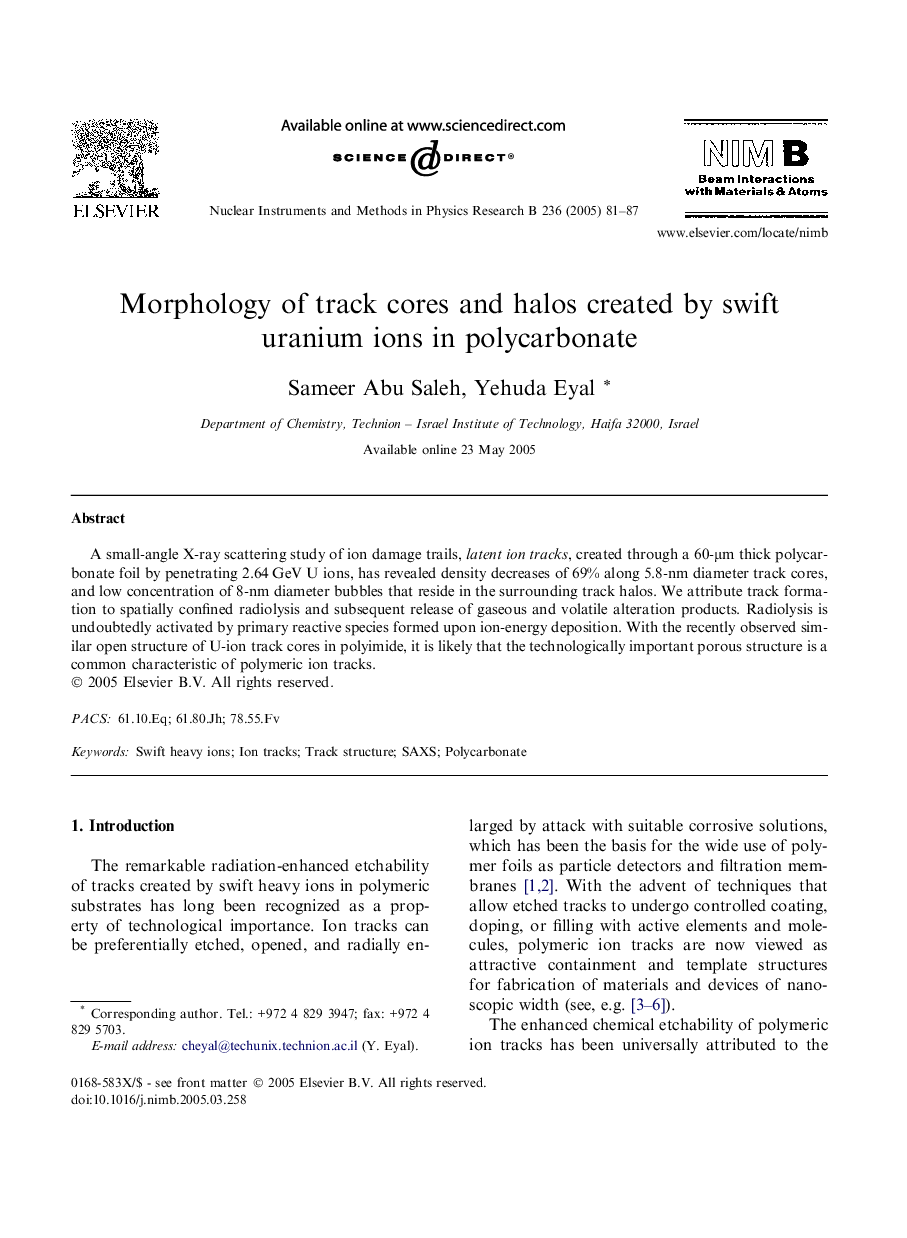| Article ID | Journal | Published Year | Pages | File Type |
|---|---|---|---|---|
| 9817814 | Nuclear Instruments and Methods in Physics Research Section B: Beam Interactions with Materials and Atoms | 2005 | 7 Pages |
Abstract
A small-angle X-ray scattering study of ion damage trails, latent ion tracks, created through a 60-μm thick polycarbonate foil by penetrating 2.64 GeV U ions, has revealed density decreases of 69% along 5.8-nm diameter track cores, and low concentration of 8-nm diameter bubbles that reside in the surrounding track halos. We attribute track formation to spatially confined radiolysis and subsequent release of gaseous and volatile alteration products. Radiolysis is undoubtedly activated by primary reactive species formed upon ion-energy deposition. With the recently observed similar open structure of U-ion track cores in polyimide, it is likely that the technologically important porous structure is a common characteristic of polymeric ion tracks.
Related Topics
Physical Sciences and Engineering
Materials Science
Surfaces, Coatings and Films
Authors
Sameer Abu Saleh, Yehuda Eyal,
